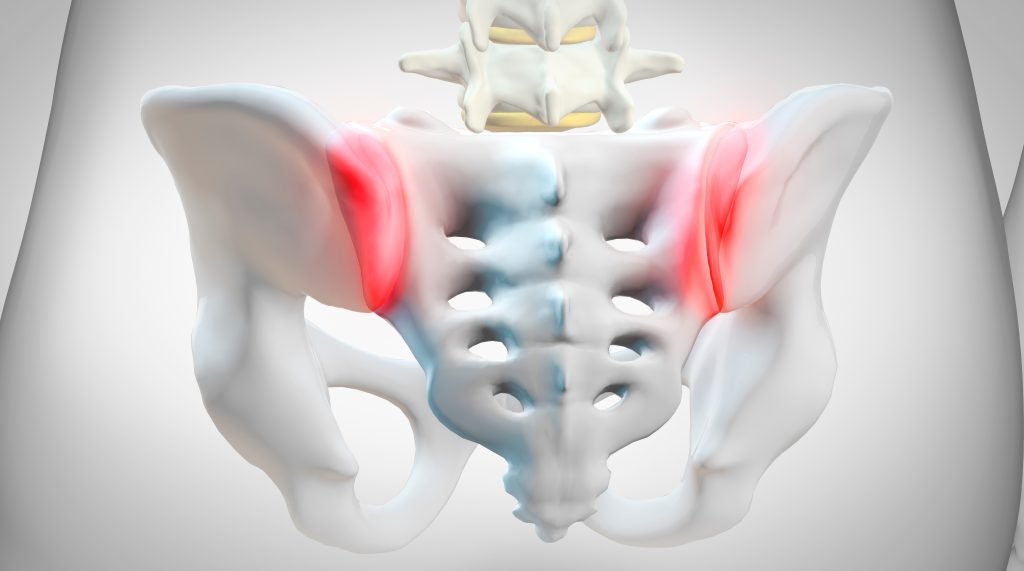The Silent Epidemic: Understanding and Treating Sacroiliac Joint (SIJ) Dysfunction
Sacroiliac joint dysfunction, commonly referred to as SIJ dysfunction, is a frequent yet often overlooked cause of lower back and pelvic pain. The sacroiliac joints connect the sacrum at the base of the spine to the pelvis, providing stability while allowing limited movement. When these joints become inflamed or misaligned, pain can develop in the lower back, buttocks, hips, or even radiate down the legs. Understanding SIJ dysfunction is essential for proper diagnosis, treatment, and long-term spinal health.
Recognizing SIJ Dysfunction
SIJ dysfunction often presents as pain localized to one side of the lower back or buttocks. Individuals may notice stiffness, difficulty standing or walking for long periods, and discomfort when climbing stairs or transitioning from sitting to standing. Unlike typical lower back pain, SIJ discomfort may worsen with specific movements such as twisting or bending.
Risk factors include pregnancy, repetitive lifting, prolonged sitting, trauma, or previous lower back injuries. Poor posture and muscle imbalances in the hips, glutes, or core can also contribute to joint instability. Because SIJ dysfunction symptoms can mimic other conditions like herniated discs or hip joint issues, accurate diagnosis is critical.
The Role of Physiotherapy in SIJ Dysfunction
Physiotherapy is central to managing SIJ dysfunction. A physiotherapist can assess posture, muscle strength, and joint mobility to identify the underlying cause of pain. Treatment focuses on stabilizing the sacroiliac joint, relieving inflammation, and restoring normal movement patterns.
Key physiotherapy interventions may include:
Strengthening exercises: Targeting the core, glutes, and pelvic muscles improves joint stability and reduces stress on the SIJ.
Stretching routines: Gentle stretches for the hip flexors, hamstrings, and lower back relieve tension around the joint.
Manual therapy: Hands-on techniques may help realign the joint and release tight muscles contributing to dysfunction.
Movement retraining: Teaching proper body mechanics and posture during daily activities reduces the risk of re-injury.
Common Exercises for SIJ Support
Several exercises can help manage SIJ dysfunction safely when performed correctly:
Bridging: Lie on your back with knees bent, feet flat on the floor, and lift your hips while engaging the glutes and core. Hold for a few seconds and lower slowly.
Clamshells: Lie on your side with knees bent, lift the top knee while keeping feet together, and strengthen hip stabilizers.
Pelvic tilts: Flatten the lower back against the floor by engaging abdominal muscles, then release. Repeat to enhance core control.
Hip stretches: Gentle stretches of hip flexors and piriformis muscles help reduce tension around the SIJ.
Consistency is key. Performing these exercises regularly, combined with professional guidance, can restore joint stability and reduce pain over time.
Lifestyle Considerations
In addition to physiotherapy, lifestyle adjustments support SIJ health:
Maintain proper posture when sitting or standing.
Avoid prolonged periods of inactivity.
Use supportive seating and mattresses to reduce joint strain.
Apply ice or heat as needed to manage inflammation.
Moving Forward
Sacroiliac joint dysfunction is a silent epidemic that often goes undiagnosed, yet effective management is possible with the right approach. Physiotherapy provides targeted exercises, education, and strategies to stabilize the SIJ, relieve pain, and prevent recurrence. By addressing underlying causes and supporting joint health, individuals can regain mobility, improve function, and protect long-term spinal wellness.

